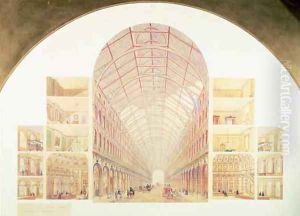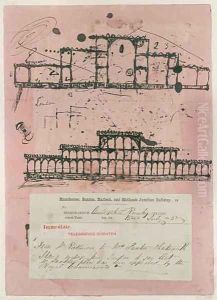Sir Joseph Paxton Paintings
Sir Joseph Paxton was an English gardener, architect, and Member of Parliament, renowned for his pioneering work in the field of glasshouse design and for his most famous creation, the Crystal Palace in London. Born on August 3, 1803, in Milton Bryant, Bedfordshire, Paxton began his career in horticulture as a garden boy at the age of 15 for Sir Gregory Osborne Page-Turner at Battlesden Park, near Woburn. His talent was soon recognized, and by 1826, he became the head gardener at Chatsworth House, the seat of the Duke of Devonshire, where he would make significant contributions to the development of modern greenhouses and landscape gardening.
At Chatsworth, Paxton designed a series of gardens, fountains, and conservatories, the most notable being the Great Conservatory. The techniques and materials he developed there, particularly the use of glass and iron, would later be employed in his design of the Crystal Palace. His work at Chatsworth established him as a leading figure in horticultural and architectural design, blending practicality with aesthetics in a way that had not been seen before.
Paxton's crowning achievement came in 1851 with the design of the Crystal Palace for the Great Exhibition in London. This vast glass and iron structure was revolutionary, not only for its size and the speed of its construction but also for its modular design and the use of prefabricated parts. The Crystal Palace not only symbolized the height of Victorian engineering and architectural innovation but also marked a significant moment in the history of design, influencing future developments in architecture. Paxton's design was acclaimed internationally and earned him a knighthood.
Beyond his architectural work, Paxton also made contributions to public life. He served as a Member of Parliament for Coventry from 1854 until his death in 1865, where he advocated for public parks and improved urban planning. Paxton's legacy is seen not only in his contributions to architecture and horticulture but also in his vision for public spaces and the role of design in improving the quality of life.
Sir Joseph Paxton died on June 8, 1865, leaving behind a legacy that extended far beyond the Crystal Palace. His innovations in the use of glass and iron in construction set the stage for modern architectural practices, and his vision for integrated design and public utility continues to influence urban planning and landscape architecture.

